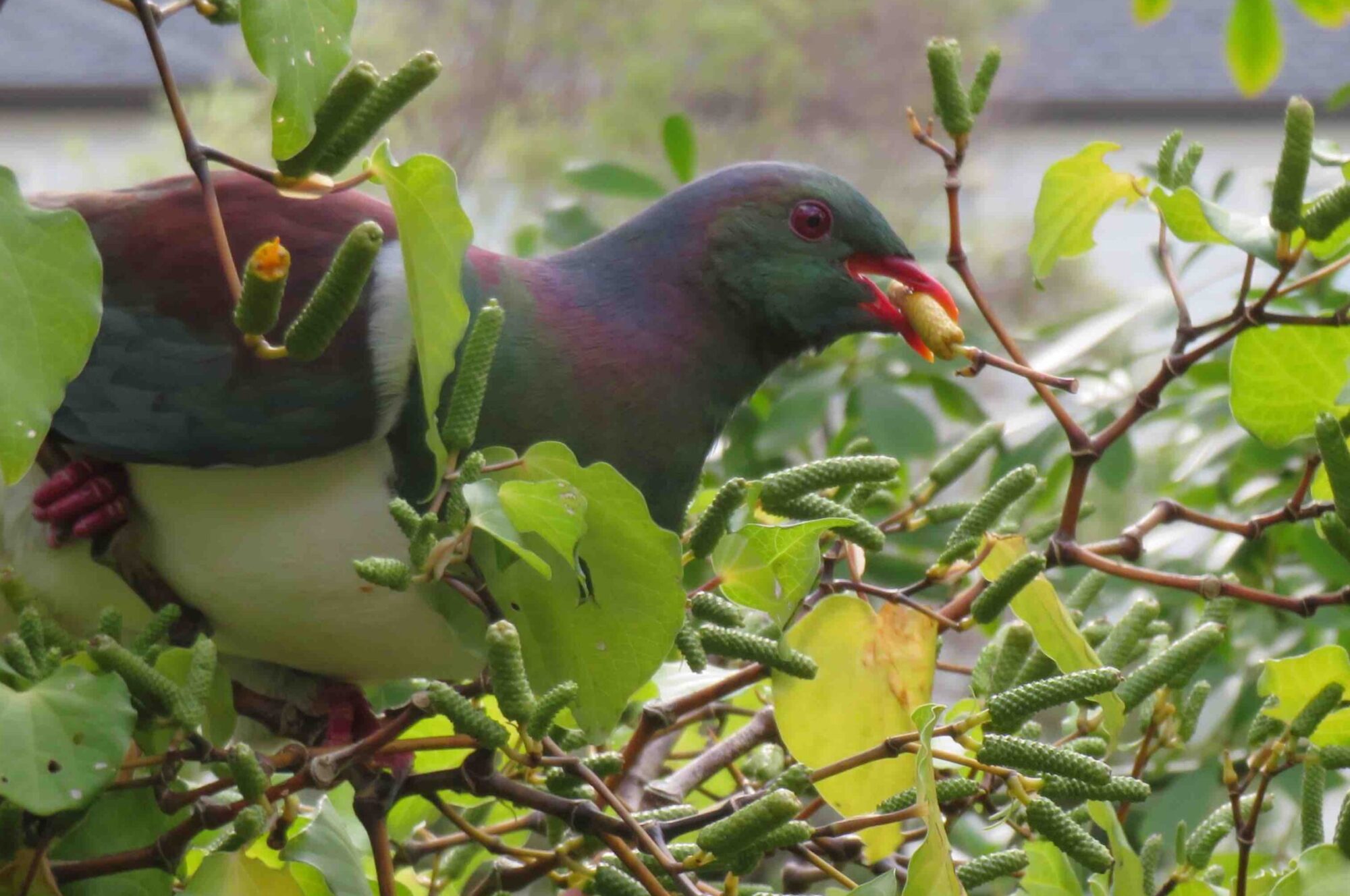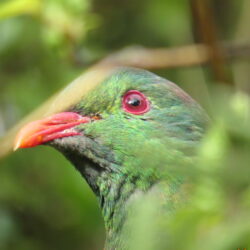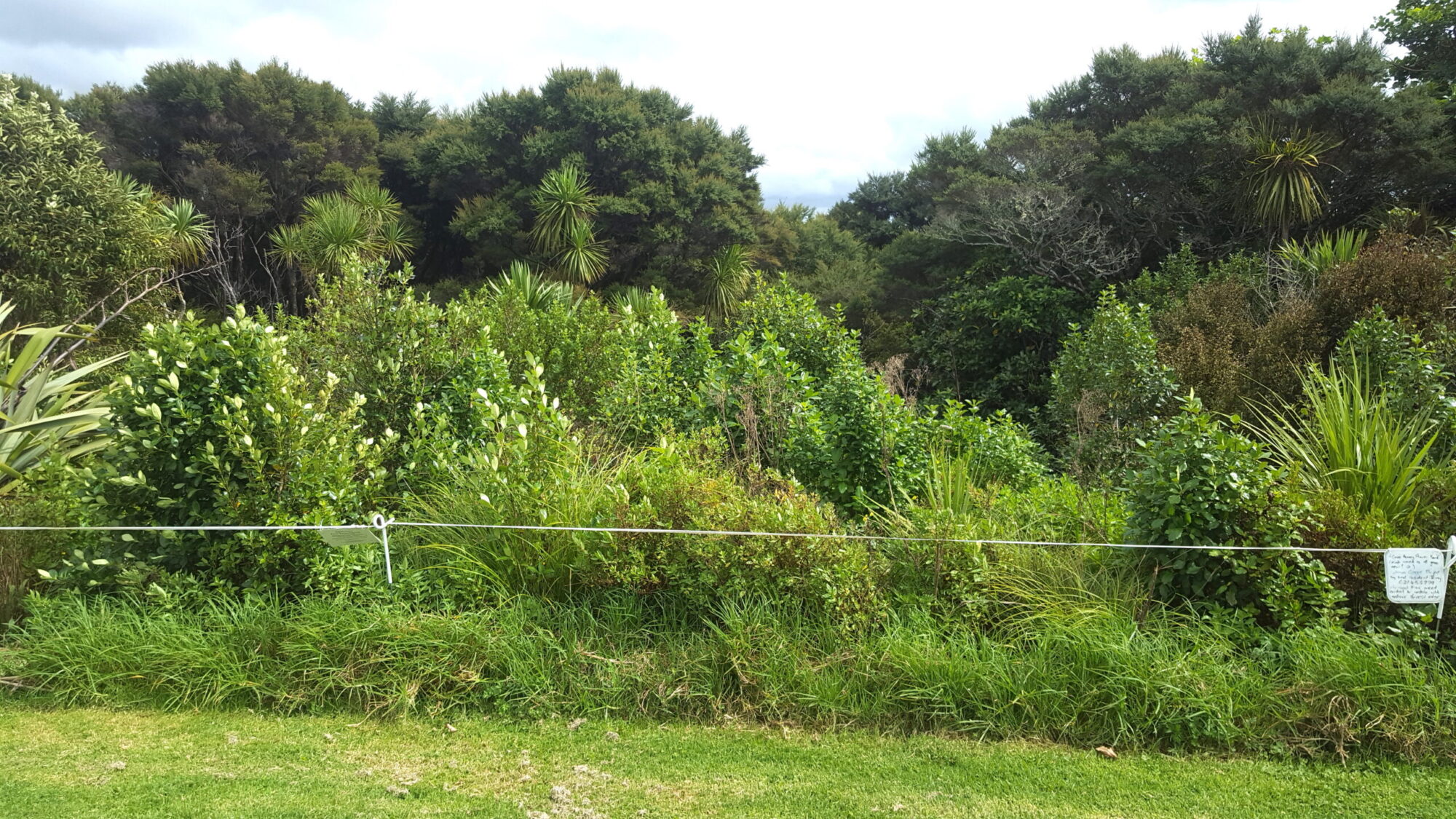Gahnia Grove is a weeding project we began on the spur of the moment on 20 May 2018, while walking along the Glenfield Rd margin of Eskdale Forest. It was recorded intensively with photos and journals in the citizen science website iNaturalist.nz.
Eskdale Forest is part of one of the largest native ecological corridors in the Auckland Region, from Bayview and Glenfield, through Birkdale, up to Hillcrest.
The forest reserve was created by the acquisition of various separate lots which had been used for forestry, horticulture and agriculture. As each lot was acquired it was allowed to regrow from the remnants of the original kauri forest, till forest covered most of the final Reserve area.
This passive restoration project was supported by successive Councils with felling of the remaining pine trees, and control of some of the other invasive tree and shrub weeds.
On our roadside bush-edge walk that day we encountered the gloomiest patch of wasteland imaginable, a forest margin of dead and dying small trees hung with a canopy of weed vines, unreachable across a little gully of tangled uncontrolled kikuyu and blackberry.


Over a couple of weekends we pulled back the weed carpet, kikuyu inseparable from honeysuckle, then began to cut our way through a wall of Japanese honeysuckle 2-3 metres thick and 3-4 metres high, revealing the rotting forms of the small trees it had smothered and strangled.
Below left: June 2018 – over a few weeks the bank has been weeded to within a few metres of the forest edge, where a wall of honeysuckle has completely covered small trees and shrubs, and almost completely covered a cabbage tree/ti kouka on the right
(slide over image left or right)
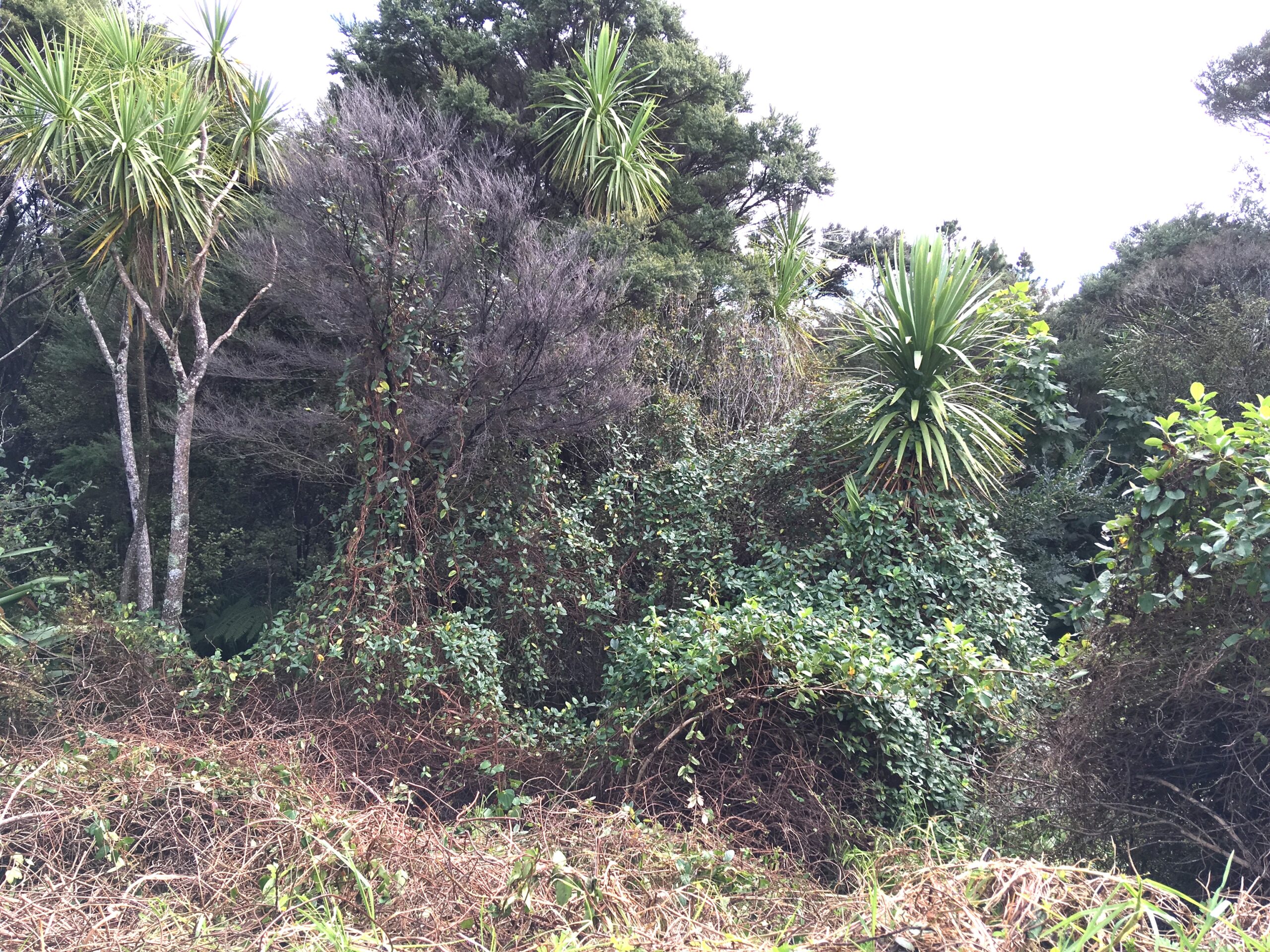

Above Right: April 2023 – the honeysuckle, blackberry, kikuyu, ginger and other weeds have been eradicated from this entire area, “The Arena”, (and from adjacent areas).
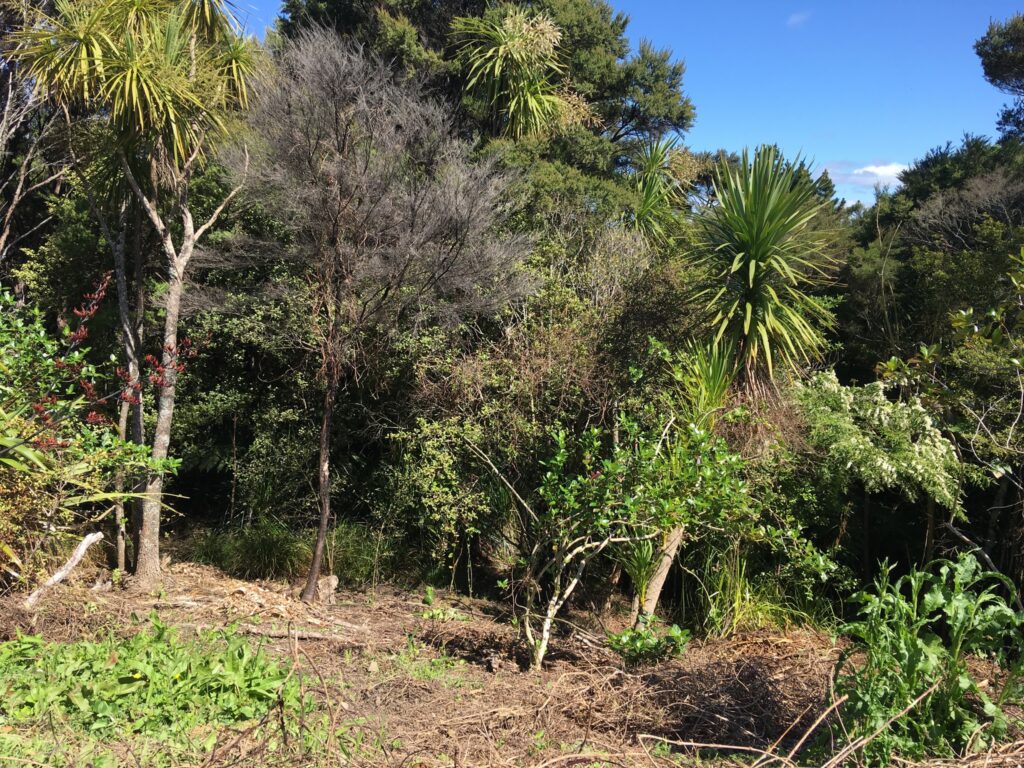
Above: October 2018 – The strangled ti kouka and forest margin have been released from the honeysuckle, which had runners up to 7 metres long running into the forest behind. The thickest stems were several centimetres thick. These were sawn part way through near the base, the mass of vine and foliage pressed over the roots as mulch, and after a few months of self-rotting were able to be uprooted, never to return.

Above and below: October 2019 – Released from destructive weeds, the survivors are thriving.
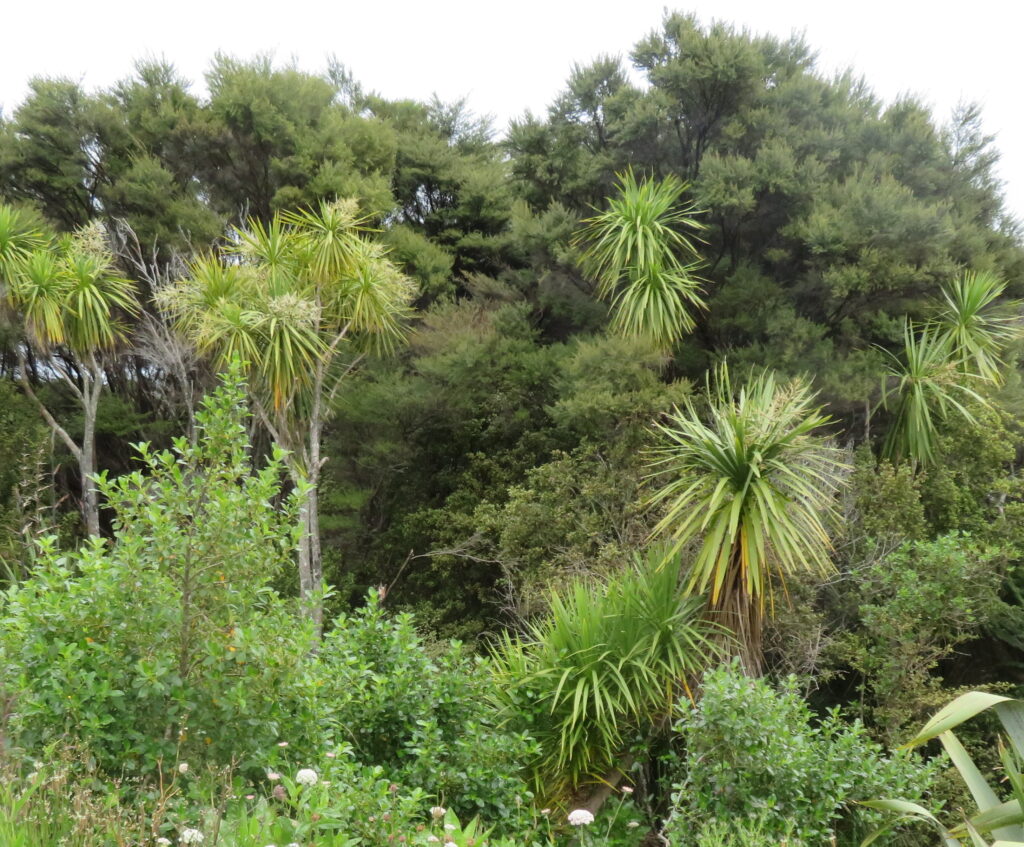
Young native revegetation has progressed up the bank, with the aid of some seedlings planted on the exposed upper bank. The trees are densely surrounded by mostly wild native shrubs, grasses and creepers, with a few introduced (weed) species allowed to remain to complete dense ground cover.
Most light-dependent weeds are now shaded out, and the rest soon will be.
Light-tolerant weeds are now easy to control, due to the build up of loose ground litter and rich loose topsoil from decomposing weeds since herbicide spraying was suspended in June 2018.
The biggest remaining weed challenge is bindweed, which hides underground in winter, and climbs to reach the light in Spring. Bindweed can strangle and smother young trees, even uprooting them, if not controlled.
However, with diligent ongoing removal of stems as they appear, it can be eradicated from an area. There is much less bindweed here than before our restoration started. In fact in 2020, before a 3 month interruption of our usual monitoring and weeding in 2021, bindweed had been almost eradicated.
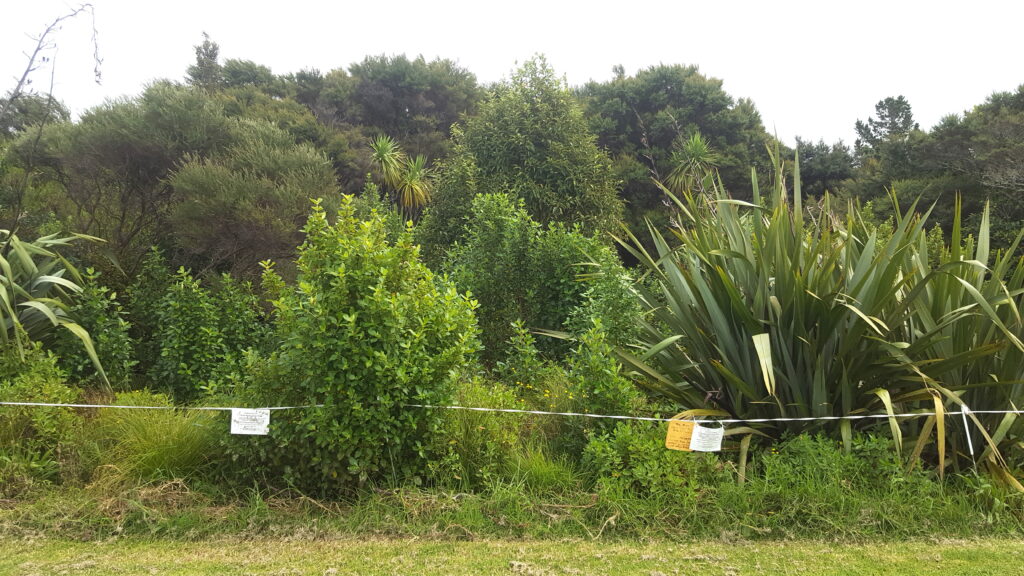
Above: April 2023 – A wider view, from the new boundary at top of the bank, to which the area of kikuyu is now limited
The foreground is dominated by the young native trees, shrubs, grasses and creepers that have, over a period of nearly 5 years handweeding, replaced a large expanse of mown kikuyu.
The head of the rescued ti kouka/cabbage tree is only barely visible, under the taller ti kouka just right of centre in the outer margin of the older kanuka forest.
It is impossible to make a photo comparable to the earlier ones in the above series, because the 2-3 metre high native vegetation is already obscuring those views.
In summary, native wild trees, herbs, shrubs, grasses and small creepers, with the addition of a few dozen ecosourced seedlings planted on the upper bank, now densely covers the previously weed filled bank, as well as a wide area that was mown kikuyu until 2018, and on the upper edge, until 2020.
To be continued…
